Customizing UI for MAS Health/Predict & Mobile Apps UI using Maximo Application Framework (MAF) Configuration Application
Maximo Application Framework Configuration Application (MAF Config App), a UI Configuration Tool, was introduced by IBM to configure Maximo Mobile applications. Support for Health & Predict was introduced with Maximo Application Suite and IBM is continuously adding more features with their latest MAS releases.
Maximo Mobile, Health & Predict applications are built with IBM's Graphite Framework and Carbon Design component.
Maximo developers need to use MAF Configuration application to modify Maximo Health/Predict, Maximo Mobile and any other application built with MAF Configuration Application. This blog outlines everything you need to setup the MAF Config app, including an example to modify an existing application with screenshots of each step.
Setup of MAF Config App:
MAF Config App runs as container on docker. The image for this application can be downloaded from IBM containers library.
Pre-requisites:
- You need to have docker running on your local workstation or on any machine that you have access to, having at least 8 GB of RAM (16 GB Recommended).
- Create an API Key to login to Maximo Application Server.
- Maximo Application Server URL should be accessible from the docker workstation
Run the following command to log in to the IBM Entitled Registry, providing your own entitlement key.
docker login cp.icr.io --username cp --password entitlement_key
Pull the MAF Config App image using docker pull cp.icr.io/cp/manage/maf-tools:8.9
Run the docker container using docker run -it --privileged -p 3001:3001 -p 3006:3006 -v /root/maximowsd:/graphite/.workspace -it cp.icr.io/cp/manage/maf-tools:8.9
Replace /root/maximowsd with a directory on your location computer
Authorize the Application in Maximo:
Open the Object Structure “OSLCMAFAPPDATA” and make sure “Configure Object Structure Security” -> “Use Object Structure for Authorization Name” is selected.
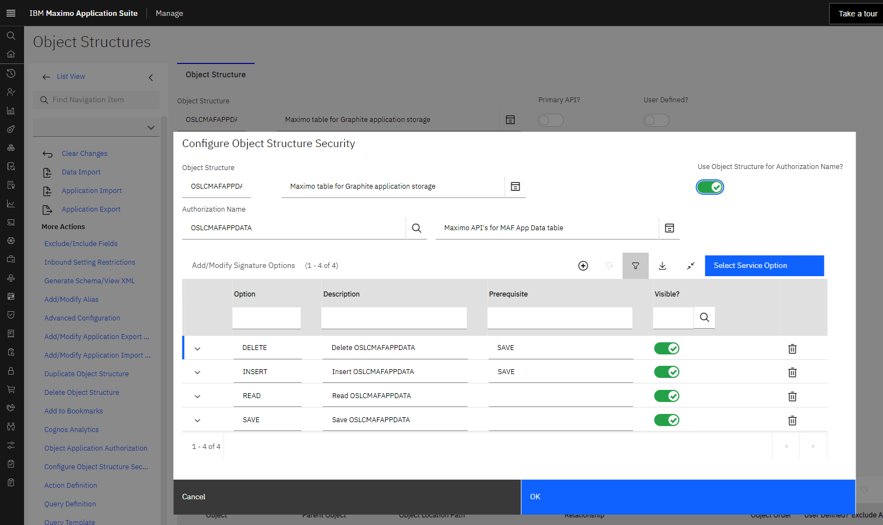
Open Security Group application and grant your login-user access to “OSLCMAFAPPDATA” and “WPEDITSETTING” object structures.
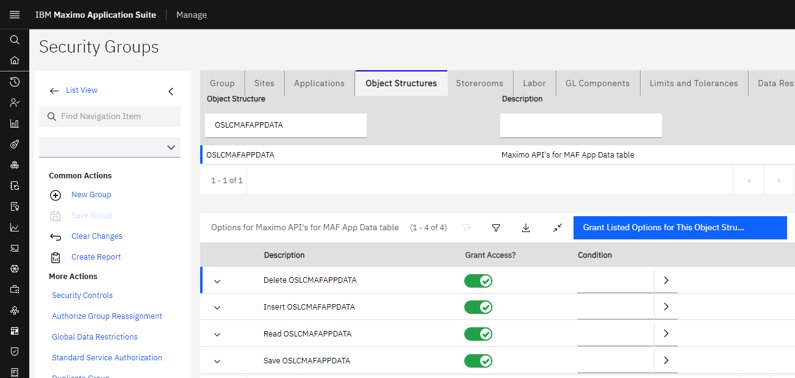
Launch and Login to the Application:
Go to http://localhost:3001 to login to the MAF Config App, following login screen will be presented. Click on “Log in using API Key”.
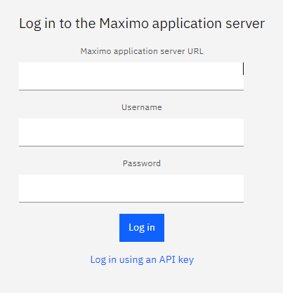
Login using Maximo Application URL and the API Key. The user will be presented with all applications available for configuration.
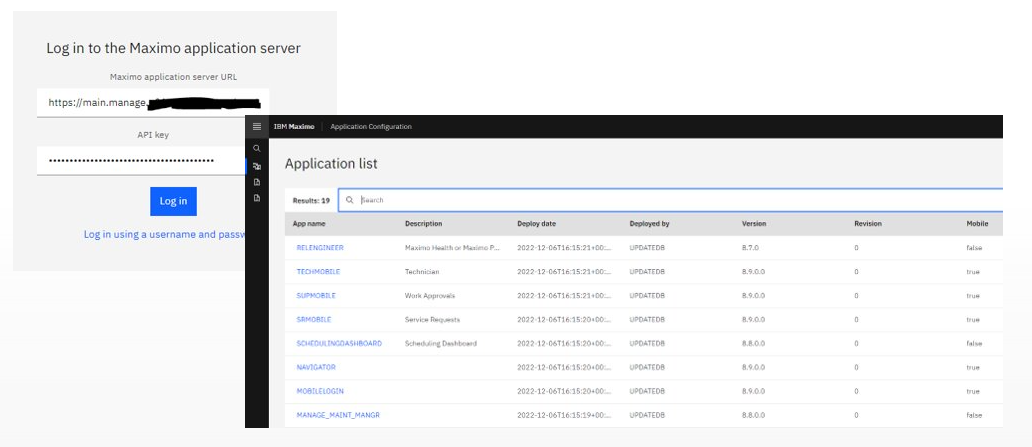
In this example, we will open MAXDEMO application and add work order “description” column to the table application.
As seen below, the MAF Config App provides navigation menu on the left, which can be used to jump to a particular component in the application XML. Right hand side of the App provides a table for modifying properties of the components. Middle section provides an XML Editor to modify application XML. After adding description column as seen below, Save and Publish the application.
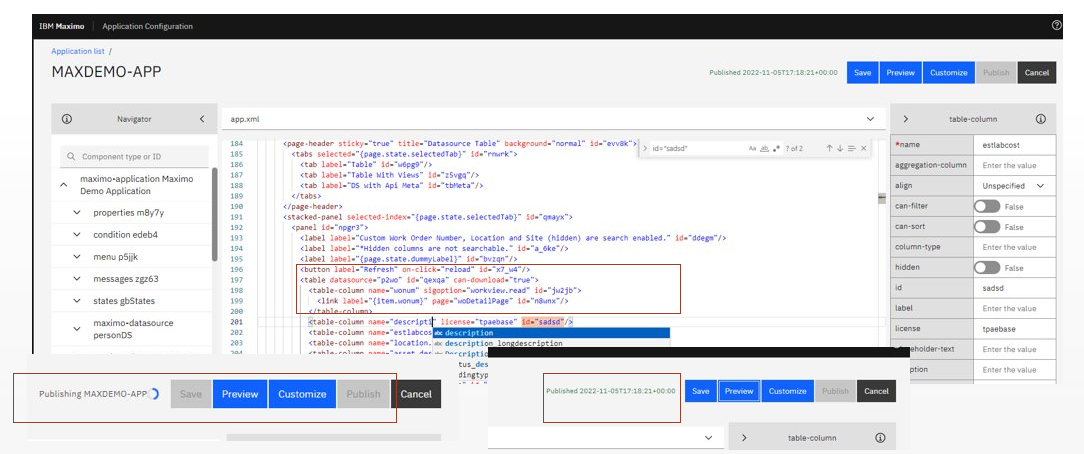
Login to Maximo and Open the Demo application from left hand side Menu. As seen below, the description column is added to the application as intended.
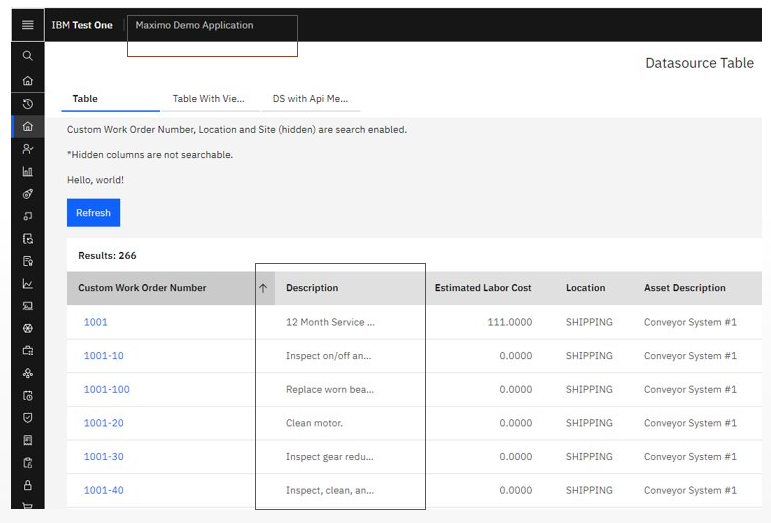
References:
https://www.ibm.com/docs/en/maximo-manage/continuous-delivery?topic=mmm-configuring-customizing-applications-maximo-application-framework-maf-configuration-application
About Khalid Sayyed
Khalid Sayyed is a Maximo Consultant with over 15 years of industry experience, primarily in IBM Maximo and Cognos analytics. He has worked on multiple Maximo implementations and on support/administration projects, leading teams of developers and consultants. He has extensive experience working with IBM Maximo infrastructure & architecture, integrations, administration, upgrade, configurations, customizations, analytics, and end user/admin trainings. Khalid is very passionate about IOT, Data science and its applications to reliability industry for predictive maintenance.



